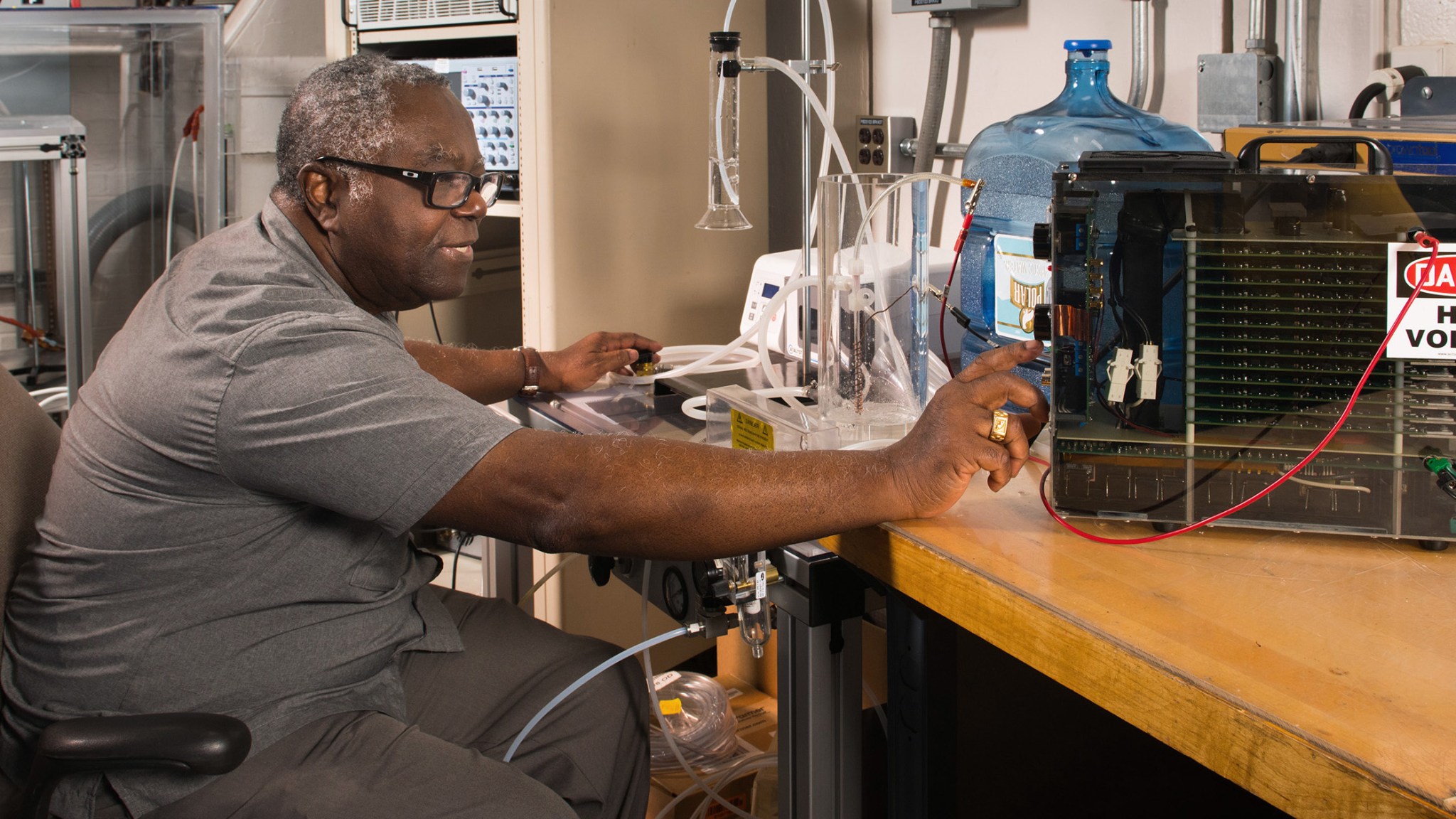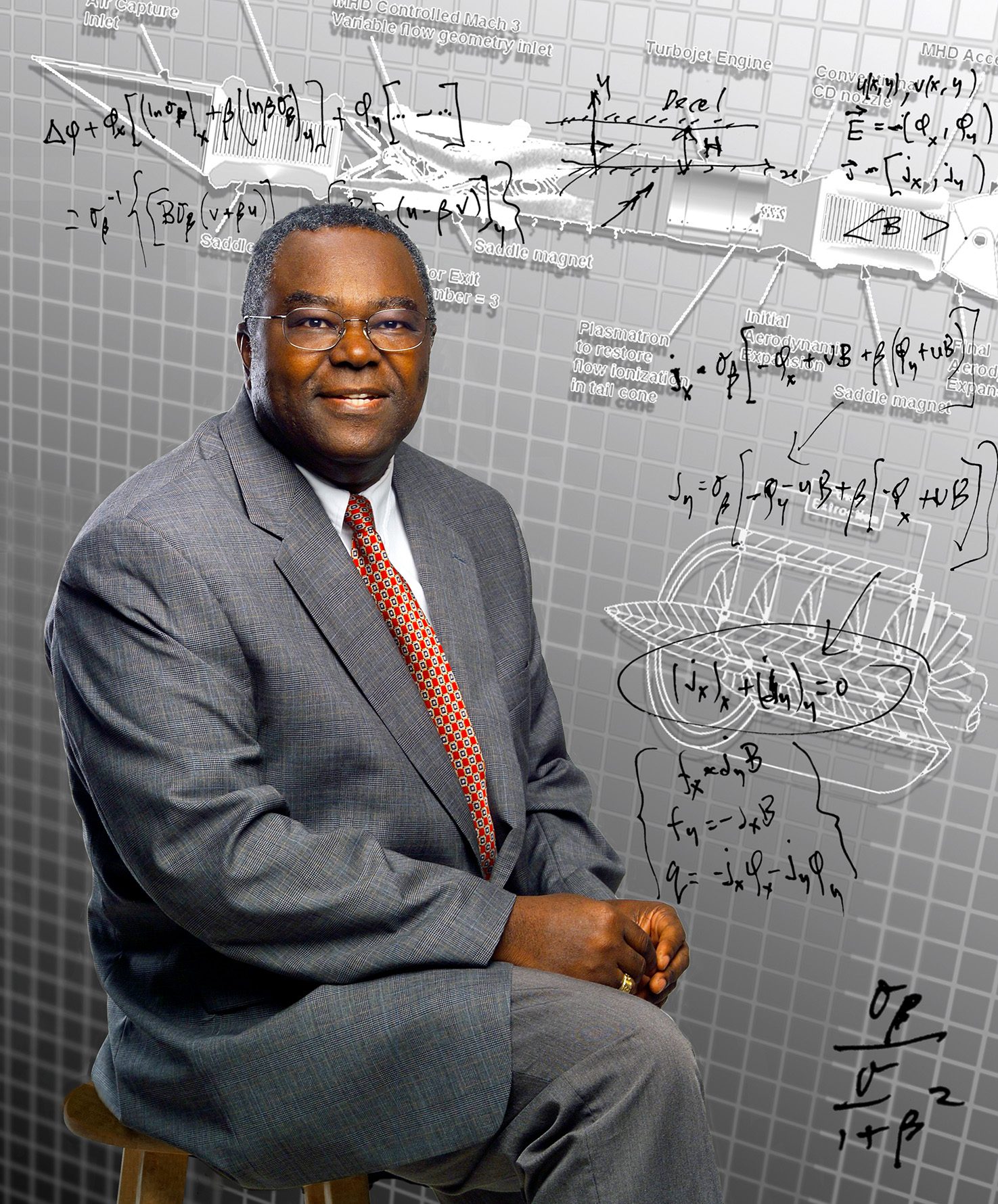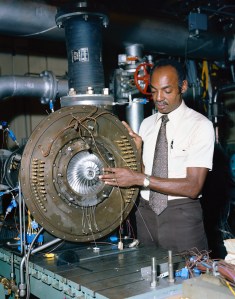When people remember Dr. Isaiah Blankson, they often recall his intellectual curiosity, generous spirit, investment in others, and a gentle sense of humor.
Blankson, a senior technologist at NASA’s Glenn Research Center, passed away late last year after over 30 years of service. An internationally recognized expert in hypersonics, magnetic levitation systems, and plasma and gas dynamics, Blankson left a vast body of work that earned him the nickname Dr. Speed.
Born in Cape Coast, Ghana in 1944, Blankson excelled in his studies from a young age and achieved the highest score on a national examination. He received a scholarship to study in the United States at the Massachusetts Institute of Technology where he earned a bachelor’s, master’s, and PhD in Aeronautics and Astronautics.
Blankson then joined the Xerox Corporation’s new Webster Research Laboratory in upstate New York where he worked with electro-hydro and gas dynamics. In 1982, he moved to General Electric’s Corporate Research Center to work on gas dynamics as they applied to high-power circuit breakers, lamp coatings, and hypervelocity projectile launchers.
In the mid-1980s, the US government renewed its interest in hypersonic vehicles for both missiles and access to space. In 1988, NASA hired Blankson to manage the agency’s new long-range program to develop technologies for air‐breathing hypersonic vehicles.
In 1997 Blankson transferred to the Glenn Research Center in Cleveland, Ohio to serve as a senior technologist. He continued his work on propulsion and aerodynamic issues related to airbreathing hypersonic vehicles. Blankson led a team developing a magnetohydrodynamic bypass engine that would permit turbojets to operate at speeds up to Mach 7, and, inspired by penguins, conceived the concept of using laser pulses to reduce sonic booms of high-speed aircraft.
He was also instrumental in the establishment of hypersonics programs at three universities to encourage young researchers to join the field.
“Isaiah was always generous with his knowledge and wisdom,” said Robert Okojie, a NASA engineer who collaborated with him on several projects. “He spent many years mentoring students from historically underrepresented colleges throughout the United States and encouraged them to pursue careers in science and technology.”
Blankson’s curiosity was legendary as he was always on the lookout for ways to contribute to research areas beyond hypersonics. He was a key contributor to the development of the novel exoskeleton engine that used a rotating drum to power the turbine blades in conventional turbofan engines, conceived of a camera utilizing millimeter-wave radiation to detect objects in opaque conditions, and, in recent years, spearheaded work on the use of electricity to purify water.
As a Senior Technologist, Blankson also counselled colleagues on their projects.
“Many people benefitted from his generosity which led to new and interesting projects pursued at the center,” said Okojie.
Blankson received a plethora of honors during his career, including two Presidential Rank Awards, a NASA Exceptional Achievement Medal, and a fellowship in the American Institute of Aeronautics and Astronautics. In 2006 he served as a US delegate on a NATO Working Group on Hypersonic Vehicle Technology.
Blankson passed away on November 19, 2021, at the age of 77. His supervisor, George Schmidt, stated, “Isaiah was renowned for his breakthrough technical contributions, extraordinary intelligence, and playful wit. He was a beloved mentor to many engineers at Glenn and in the field of aeronautics. He will be sorely missed.”
Robert S. Arrighi
NASA Glenn Research Center






























